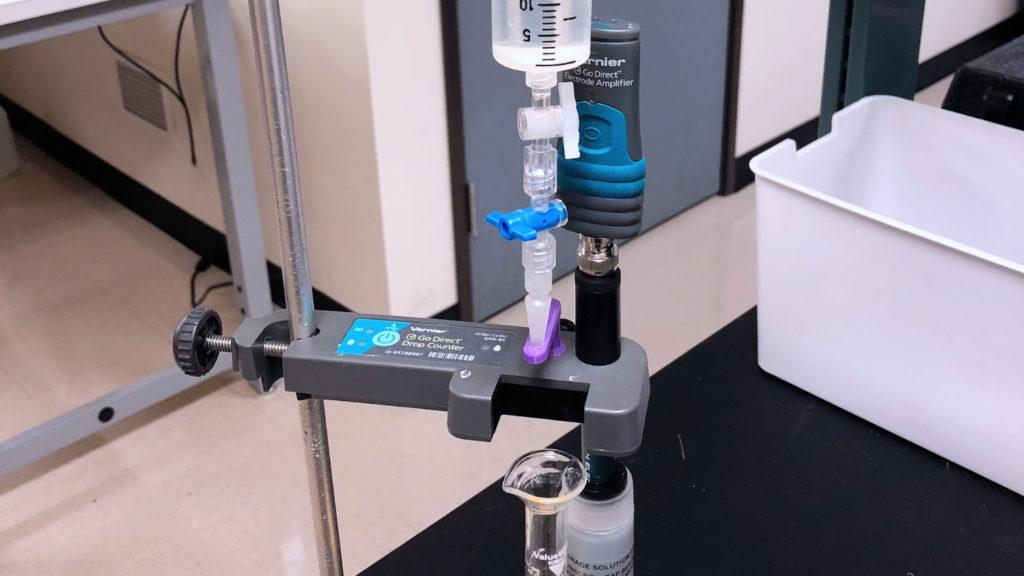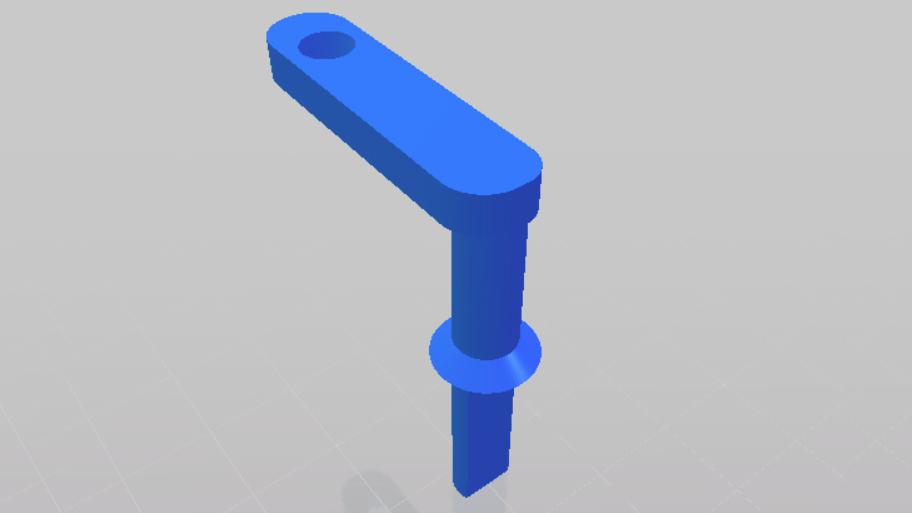
Did you know that you really can’t calibrate a Vernier Drop Counter? Instead, you are actually calibrating the tip of the titrant reservoir.
The Vernier Drop Counter is a modified photogate designed, through the software, to monitor drops of liquid as they pass through the slot. A beam of infrared light passes through the slot continuously. If anything blocks that beam, the software interprets that as a drop. The result is either a drop, or no drop.
More accurately, when you calibrate a Vernier Drop Counter, you are determining the drop size for titrants as they are delivered from the reservoir tip. The drop size will vary depending on the composition of the titrant, the intermolecular forces between the molecules of the titrant and the plastic in the tip, the height of liquid in the reservoir, the rate at which the drops are allowed to flow out of the tip, and even the temperature. The tip is made of formed plastic. The drop size will also vary with different tips.
For the absolute best results, different titrants should be calibrated individually. For aqueous solutions with concentrations of 1 M or less, a reasonable calibration of the Vernier Drop Counter can done with distilled water at room temperature. While the software is running, drops are allowed to pass through the slot in the Drop Counter, collected in a graduated cylinder, and counted by the software. A drip rate of around 1 drop every 2 seconds is recommended to allow the drops to reach their maximum size. (This also allows the pH, conductivity sensor, or oxidation/reduction potential sensor time to react between drops.) It is recommended that the reagent reservoir be filled to 60 mL and a total volume of just under 10 mL be collected during the calibration. This ensures that the pressure on the drops at the tip is reasonably constant. The larger the volume of titrant used and number of drops, the more accurate the value for the drop size.
Once a prescribed volume of water is collected, the valve is closed, the volume is entered into the software, and the value of drops/mL is calculated automatically. This value can be written on the reservoir system (reagent reservoir, valves, and tip) for future use. All Vernier software allows the user to enter the known value without having to completely carry out the calibration again.
Vernier Tip: Check out our Thingiverse webpage for a free, 3D-printable design for a widget that centers the reagent reservoir system above a Drop Counter. It comes in handy for aligning the tip to ensure the drops are detected by the Drop Counter.

